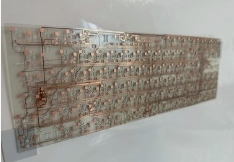In the field of electronic manufacturing, PCB circuit testing is a key link to ensure product quality. A complete test project requires systematic planning, precise technology selection and rigorous problem-solving mechanism. This article combines industry practices to provide electronic engineers with feasible test solutions from three dimensions: project planning, technical implementation and common problem handling.
Test demand stratification:
1. Basic layer (DFT design): embed test points in the PCB design stage, requiring the pad spacing ≥ 0.5mm and the test point diameter ≥ 1mm to ensure that the ICT (in-circuit test) coverage rate reaches more than 90%. A communications equipment manufacturer shortened the test time by 40% by optimizing the test point layout.
2. Functional layer (FCT test): For key circuits such as power modules and high-speed signal interfaces, special test fixtures need to be developed. The test voltage needs to cover ±10% of the rated value, and the current load capacity should reserve a 30% margin.
3. Reliability layer (HALT test): Design a comprehensive environmental test solution including temperature cycling (-40℃~125℃) and vibration (random vibration level 3Grms), and the acceleration factor must reach more than 8 times the actual use conditions.

pcb
Electrical performance test
1. Open circuit/short circuit detection: Use the four-wire test method, and the test voltage is ≤100mV to avoid component damage. For high-density boards (spacing<0.1mm), a flying probe tester is required to use an AI algorithm to compensate for probe offset.
2. Impedance control: Arrange TDR (time domain reflectometer) test points in the differential signal line area, and the impedance deviation is required to be ≤±5%. A server motherboard project reduced SSN (synchronous switching noise) by 60% by optimizing the stacking design.
Functional verification
1. Boundary scan test: Use the JTAG interface to perform interconnection testing on BGA chips, which can detect more than 95% of chain connection failures.
2. Protocol test: For interfaces such as USB and PCIe, a bit error meter (such as Anritsu MP1900A) is required to verify signal integrity, requiring eye diagram height ≥800mV and jitter ≤50ps.
Reliability assessment
3. Thermal cycle test: Perform temperature cycle test from -55℃ to 125℃ to observe solder joint creep deformation. Use DSC (differential scanning calorimetry) to evaluate the thermal fatigue life of solder alloys.
4. Mechanical shock: Apply a peak acceleration of 100G and a pulse width of 1ms to verify the component's ability to resist mechanical stress. An automotive electronics project reduced the component dropout rate from 2.1% to 0.3% by optimizing the PCB fixing bracket.
Common problems
1. Insufficient test coverage
Phenomenon: The ICT test missed detection rate exceeds 5%.
Solution: Use a grid test point layout and add tiny test points with a spacing of 0.5mm in the BGA area. A medical device project increased the coverage to 98% through this method.
2. High-speed signal attenuation
Phenomenon: 10GHz signal transmission loss exceeds 3dB.
Solution: Use Megtron6 substrate (Dk=3.4, Df=0.004) and coplanar waveguide structure to reduce the loss to 2.2dB.
Thermal stress failure
3. Phenomenon: BGA solder joints crack after temperature cycling.
Solution: Use SnAgCu lead-free solder to optimize PCBA thermal expansion coefficient matching. Through thermal-mechanical coupling simulation, the equivalent stress of the solder joint is reduced from 80MPa to 45MPa.